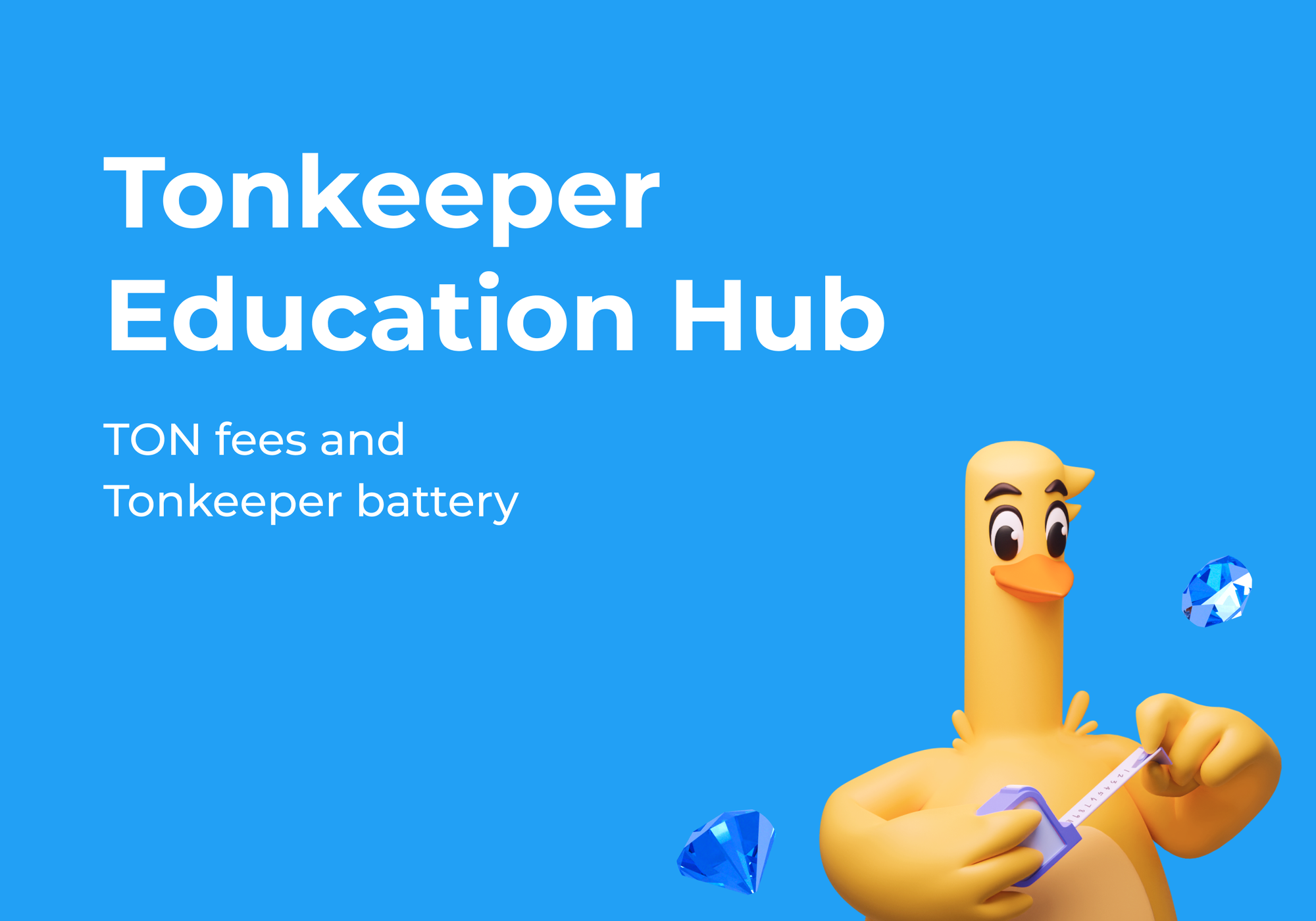Tonkeeper Education Hub

We are thrilled to announce the new installment of Tonkeeper Education Hub. This time, we will cover TON fees and the Tonkeeper battery.
TON has garnered significant attention for its high throughput, scalability, and low transaction costs. However, like any blockchain network, it operates on a fee-based system. Understanding these fees is crucial for users to effectively manage the TON holdings and optimize their transactions.
How do TON Fees Work?
When making a crypto transaction, users are usually required to pay a gas fee. TON fees included in gas are complex and depend on several factors. Have a look at the fee formula below.
TransactionFee = StorageFees + InFwdFees + ComputationFees + ActionFees + OutFwdFees
Let’s break it down and discuss each factor that comes into play:
- Storage_fee is the cost of storing the smart contract (including the TON wallet) on the blockchain. This is essentially rent paid by the second.
- in_fwd_fee is a charge for importing messages from outside the TON blockchain into the TON network for validators to process.
- computation_fee is the cost of running the smart contract code on the TON virtual machine, and The more complex code the higher the fee is.
- action fee is the cost of processing an action triggered by the smart contract execution, like sending messages to other contracts.
- out_fwd_fee is a charge for sending messages out of the TON network to interact with external services.
The average gas price when sending any amount of TON sits around 0.0055 TON. Transactions are expected to remain below $0.01, even if the price of TON increases significantly. This is a stark contrast to the often exorbitant fees seen on other popular blockchains.
🔋Tonkeeper Battery
Tonkeeper Battery offers an alternative way of paying transaction fees. Instead of paying gas in crypto, you can do so by spending battery charges you can buy hassle-free with your credit card or a stablecoin.
Battery has been created to remove an obstacle for newcomers. Users can conduct transactions without going to an exchange to buy coins to cover blockchain fees. Tonkeeper Battery pays your fees for you, automatically.
Users can charge the battery with one tap using in-app purchases, or with TON or stablecoins. One charge is enough to cover the fee of a simple TON transfer transaction, with more complex transactions requiring more charges.
When a user signs a transaction, Tonkeeper deducts the amount of charges required to pay gas fees from the Battery.
One charge: Covers a simple Ton transfer.
5–10 charges: Required for more complex transactions like token or NFT transfers.
Tonkeeper Battery has processed more than 2 million transactions by mid-June 2024. Check it out now and make crypto transactions simpler than ever.